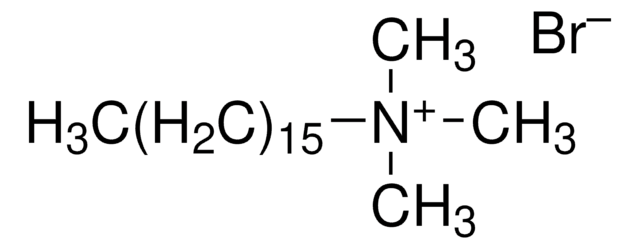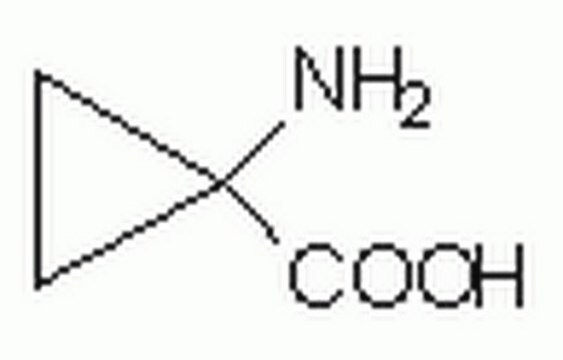199532
Chromeazurol S
Dye content 45 %
Synonim(y):
Chrome Azurol S, Mordant Blue 29
About This Item
Polecane produkty
Postać
powder
skład
Dye content, 45%
kolor
dark brown
rozpuszczalność
water: 0.1%
λmaks.
458 nm
ε (współczynnik ekstynkcji)
≥9000 at 424-436 nm in H2O at 0.03 g/L
≥9000 at 424-436 nm in H2O
Zastosowanie
diagnostic assay manufacturing
hematology
histology
temp. przechowywania
room temp
ciąg SMILES
[Na+].[Na+].[Na+].Cc1cc(cc(C([O-])=O)c1O)C(=C2/C=C(C)C(=O)C(=C2)C([O-])=O)\c3c(Cl)ccc(c3Cl)S([O-])(=O)=O
InChI
1S/C23H16Cl2O9S.3Na/c1-9-5-11(7-13(20(9)26)22(28)29)17(12-6-10(2)21(27)14(8-12)23(30)31)18-15(24)3-4-16(19(18)25)35(32,33)34;;;/h3-8,26H,1-2H3,(H,28,29)(H,30,31)(H,32,33,34);;;/q;3*+1/p-3/b17-12-;;;
Klucz InChI
FUIZKNBTOOKONL-NDOZRWCBSA-K
Szukasz podobnych produktów? Odwiedź Przewodnik dotyczący porównywania produktów
Powiązane kategorie
Opis ogólny
Zastosowanie
Kod klasy składowania
11 - Combustible Solids
Klasa zagrożenia wodnego (WGK)
WGK 3
Temperatura zapłonu (°F)
Not applicable
Temperatura zapłonu (°C)
Not applicable
Środki ochrony indywidualnej
dust mask type N95 (US), Eyeshields, Gloves
Certyfikaty analizy (CoA)
Poszukaj Certyfikaty analizy (CoA), wpisując numer partii/serii produktów. Numery serii i partii można znaleźć na etykiecie produktu po słowach „seria” lub „partia”.
Masz już ten produkt?
Dokumenty związane z niedawno zakupionymi produktami zostały zamieszczone w Bibliotece dokumentów.
Klienci oglądali również te produkty
Nasz zespół naukowców ma doświadczenie we wszystkich obszarach badań, w tym w naukach przyrodniczych, materiałoznawstwie, syntezie chemicznej, chromatografii, analityce i wielu innych dziedzinach.
Skontaktuj się z zespołem ds. pomocy technicznej




